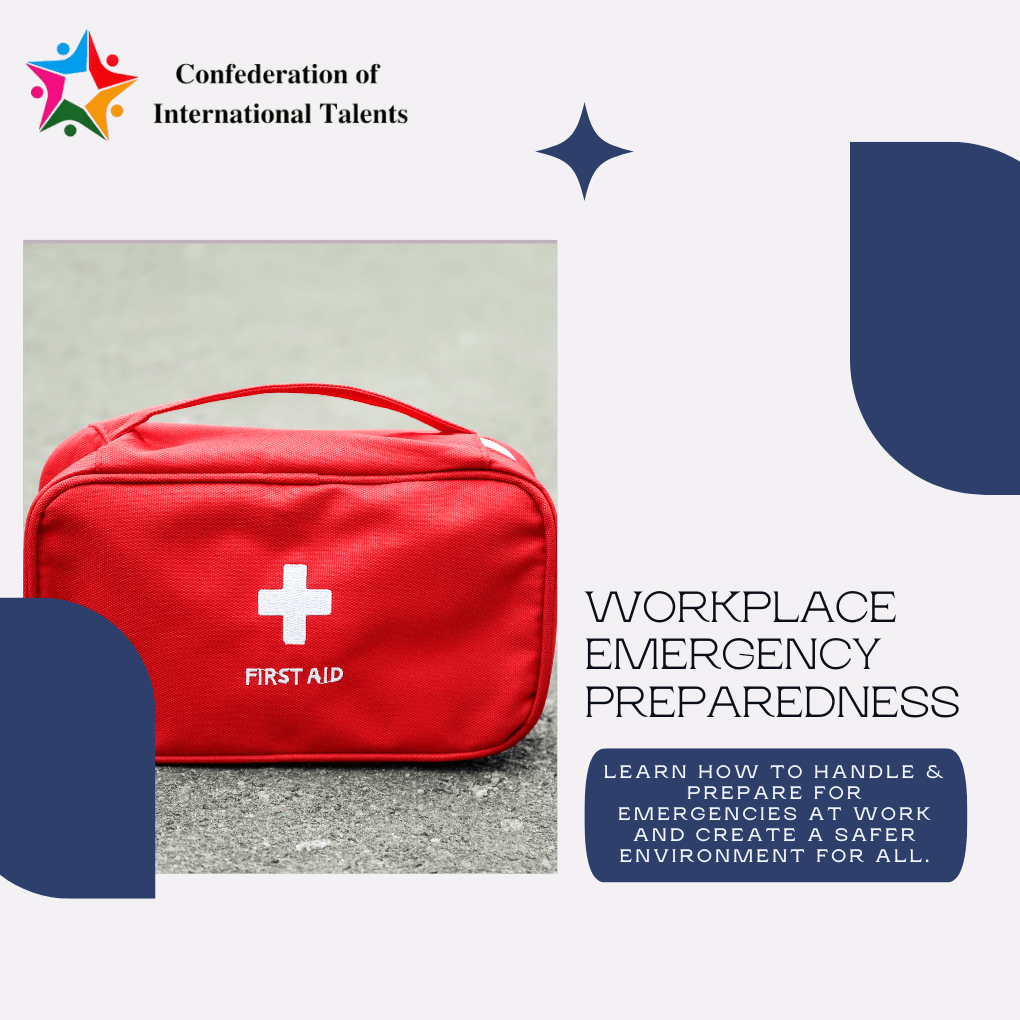How to Effectively Prepare and Handle Workplace Emergencies
Workplace emergencies can happen unexpectedly, posing risks to employees’ safety and well-being. Being prepared and knowing how to respond promptly ensures everyone’s safety. It’s essential to have detailed action plans in place for various emergencies. Explore a comprehensive guide to workplace emergency preparedness that encompasses steps to identify emergencies, implement action plans, and adopt preventive measures. Stay proactive and ensure the safety of your workplace with integrated OHS training.
Comprehensive Approach to Workplace Emergency Preparedness
Identify the Emergency
- Remain Calm:
- Stay composed and assess the situation to identify the type and severity of the emergency.
- Alert Others:
- Inform coworkers about the emergency and advise them to remain calm and follow instructions.
Assess the Situation
- Gather Information:
- Collect pertinent details about the emergency, such as its location, extent, and potential risks.
- Evaluate Risks:
- Analyze the risks associated with the emergency to determine the most appropriate response strategy.

Activate Emergency Response
- Notify Authorities:
- Contact emergency services promptly and provide them with relevant information about the situation.
- Initiate Evacuation:
- If necessary, initiate evacuation procedures and guide employees to designated assembly points.
- Provide Assistance:
- Offer aid to those in need, prioritizing vulnerable individuals during evacuation.
Implement Action Plan
- Follow Established Procedures:
- Adhere to predefined emergency response protocols and take appropriate actions based on the nature of the emergency.
- Utilize Resources:
- Utilize available resources, such as emergency supplies and equipment, to mitigate the impact of the emergency.
Preventive Measures
Risk Assessment:
Perform routine risk evaluations to detect possible dangers and put in place strategies to reduce their impact.
Safety Training:
Provide comprehensive Occupational Health and Safety (OHS) training to employees to equip them with the knowledge and skills to prevent accidents and respond effectively to emergencies. Avoid common mistakes When Implementing OHS Training for effective outcomes.
Emergency Drills:
Conduct regular emergency drills to ensure that employees are familiar with emergency procedures and can respond swiftly and effectively during a crisis.
Maintenance Checks:
Regularly inspect and maintain safety equipment, such as fire extinguishers and alarm systems, to ensure they are in working order.
Communication and Reporting:
Establish clear communication channels for reporting safety concerns and encourage employees to communicate hazards promptly.
Detailed Action Plans for Handling Different Workplace Emergencies
Fire Emergencies
Action Plan:
- Alert:
- Sound the fire alarm immediately upon discovering a fire.
- Evacuate:
- Follow evacuation procedures, using designated exits and assisting others if possible.
- Assess:
- Evaluate the situation and report any missing personnel to emergency responders.
- Combat (if Safe):
- If trained and equipped, use appropriate fire extinguishers to combat small fires while prioritizing personal safety.
- Account:
- Assemble at designated assembly points and conduct headcounts to ensure everyone is safe.
- Await Further Instructions:
- Follow instructions from emergency responders and cooperate with authorities.
Medical Emergencies
Action Plan:
- Assess the Situation:
- Quickly assess the severity of the medical emergency.
- Call for Help:
- Dial emergency services and provide clear and concise information about the situation.
- Provide First Aid:
- If trained, administer appropriate first aid measures until professional help arrives.
- Assist Emergency Responders:
- Guide emergency responders to the location of the medical emergency and provide necessary assistance.
- Notify Management:
- Inform management or designated personnel about the medical emergency and any actions taken.
Natural Disasters
Action Plan:
- Prepare:
- Organize frequent practice sessions and trainings to ensure that every staff member is well-acquainted with emergency protocols.
- Monitor Weather Alerts:
- Stay informed about weather forecasts and warnings issued by relevant authorities.
- Evacuate Safely:
- Follow evacuation procedures based on the type of natural disaster and relocate to designated safe areas.
- Seek Shelter:
- Take cover in sturdy structures or designated safe zones until the threat has passed.
- Account for Personnel:
- Conduct headcounts to ensure everyone is safe and accounted for after the disaster.
Hazardous Material Spills
Action Plan:
- Contain the Spill:
- Immediately contain the spill using appropriate barriers or materials to prevent further spread.
- Evacuate Affected Areas:
- Clear the area of personnel and restrict access to prevent exposure to hazardous materials.
- Notify Authorities:
- Contact emergency services and relevant authorities to report the spill and request assistance.
- Initiate Cleanup Procedures:
- Follow established cleanup procedures, using appropriate protective equipment and materials.
- Communicate:
- Keep employees informed about the situation & implement effective hazard communication, and guide actions to take.
FAQs (Frequently Asked Questions)
Q1: What types of emergencies should be included in our workplace emergency preparedness plan?
Workplace emergency preparedness plans should cover a range of emergencies ( but not limited to), including fires, natural disasters, medical emergencies, chemical spills, and security threats.
Q2: How often should emergency drills be conducted?
Emergency drills should be conducted regularly, typically at least once or twice a year, to ensure that employees are familiar with emergency procedures and can respond effectively during a crisis.
Q3: Is OHS training mandatory for all employees?
OHS training is essential for all employees, especially those working in high-risk environments. While requirements may vary by jurisdiction, employers are generally required to provide OHS training to ensure a safe workplace.
Q4: How can we ensure that employees remain calm during an emergency?
Providing regular training, conducting emergency drills, and emphasizing the importance of staying calm can help employees remain composed and follow emergency procedures effectively.
Q5: What should be included in an emergency communication plan?
An emergency communication plan should outline communication protocols, including how to notify employees of emergencies, establish communication channels with emergency services, and provide updates to stakeholders.
Conclusion:
Handling workplace emergencies requires preparation, quick thinking, and decisive action. By familiarizing yourself with different types of emergencies and following the recommended steps, you can ensure the safety of yourself and others. Also by implementing detailed action plans tailored to different types of workplace emergencies, organizations can effectively respond to crises, protect lives, and minimize damage.
Confederation of International Talents provides comprehensive training on OHS in Mauritius as per approved guidelines. For more details contact us!
